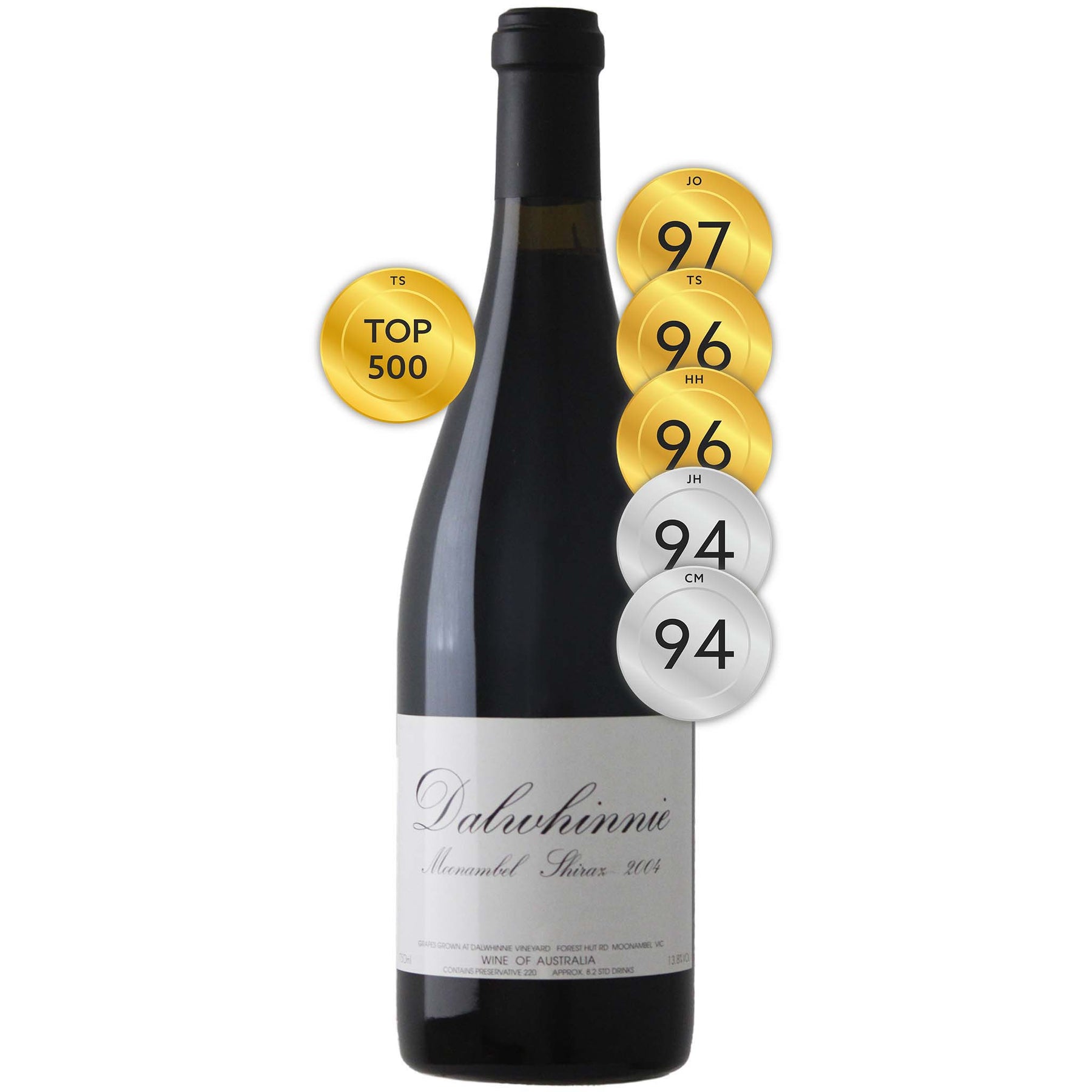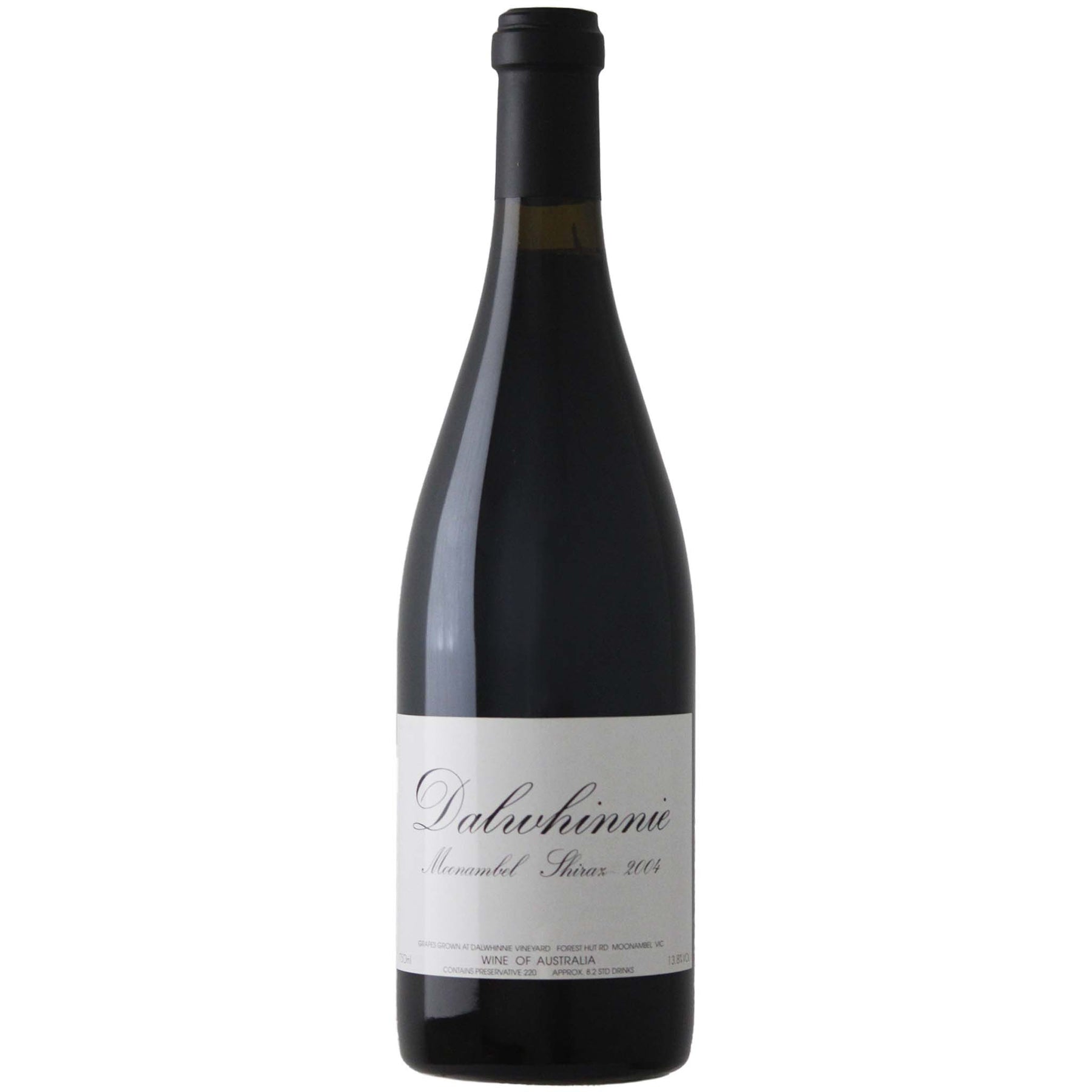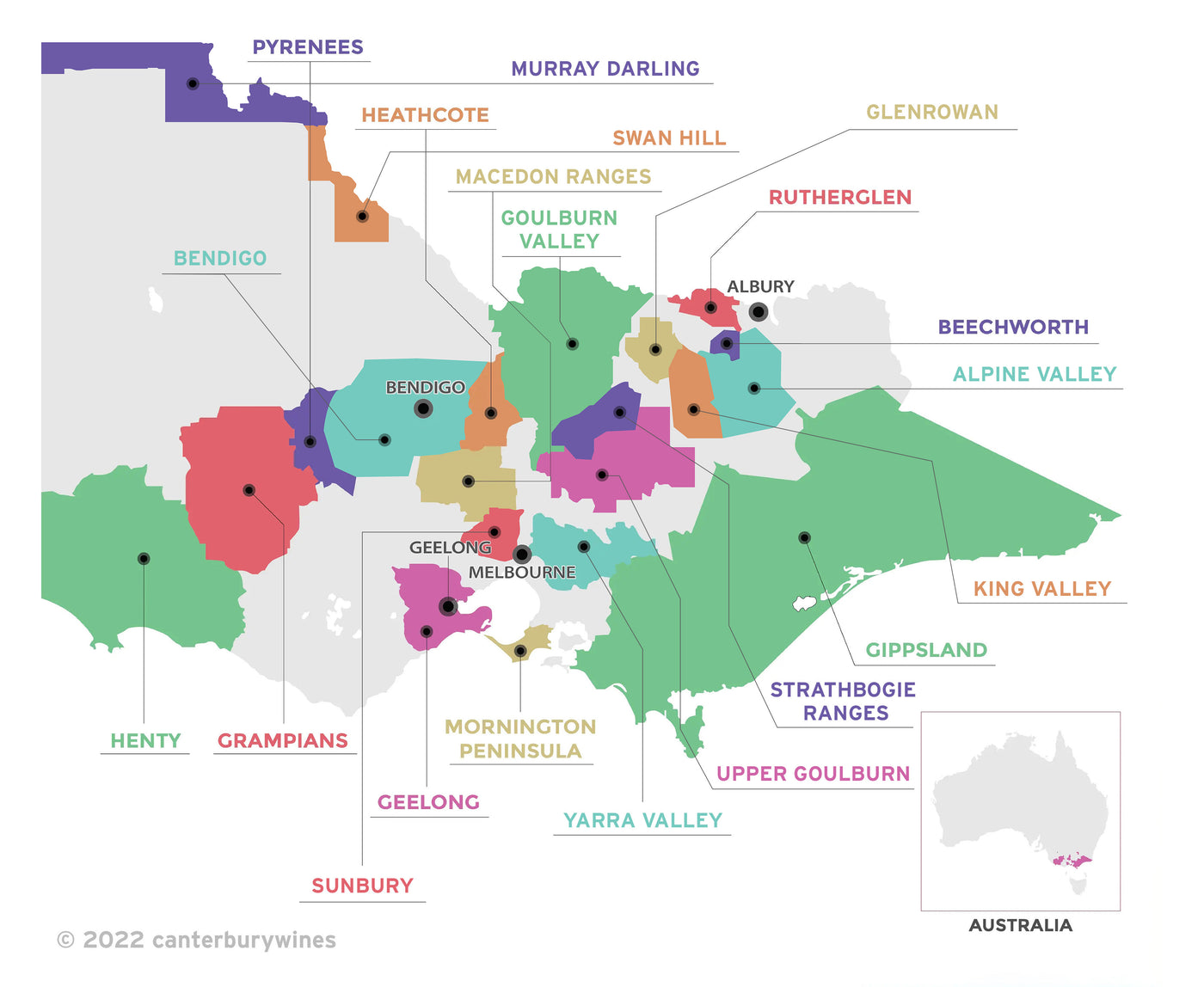

Dalwhinnie Moonambel Shiraz 2004
Style: Red Wine
Closure: Cork
Dalwhinnie Moonambel Shiraz 2004
Warehouse
34 Redland Drive
Vermont VIC 3133
Australia
Critic Score: 97
Alcohol: 13.8%
Size: 750 ml
Drink by: Now
"The Dalwhinnie Shiraz vineyard is one of Australia's great wine treasures." Campbell Mattinson
Dalwhinnie, located near the small village of Moonambel in the heart of the Pyrenees region of western Victoria, is one of Victoria's oldest family-run vineyards. Dalwhinnie has been growing grapes for nearly 50 years and the 16-hectare vineyard is now fully mature. At 595 metres above sea level, Dalwhinnie is the highest and most remote of the Pyrenees district vineyards. The vineyard is located in a naturally undulating trough which falls away from the hills, forming an amphitheatre nestled into the ranges.
"Concentrated plum essence and spice aromas, some nutty oak characters, and the palate is bright, fresh, youthful and powerful, but with wonderful elegance and class. Has ages ahead of it. Lovely wine of intensity and power, but also elegance and balance." Huon Hooke
Expert reviews
"A world-class shiraz from one of Victoria's best vineyards. Its exotically musky aromas of dark plums, cassis, redcurrants and cranberries are backed by dusty new vanilla oak, with complex undertones of dried herbs, cloves, mint and licorice, plus faint suggestions of licorice and treacle. Sumptuous and velvet-smooth, it long and fine-grained palate is exceptionally elegance and seamless, especially given the sheer depth and intensity of its alluringly bright and sour-edged dark berry/plum fruit. Framed by mouth-coating tannins, it's marvellously long, complete and measured, finished by refreshing and vibrant acids. A great wine, with nothing out of place. Drink 2012-2016+." Jeremy Oliver - 97 points
"Bright, deep red-purple: an outstanding colour in the lineup of vintages. Concentrated plum essence and spice aromas, some nutty oak characters, and the palate is bright, fresh, youthful and powerful, but with wonderful elegance and class. Has ages ahead of it. Lovely wine of intensity and power, but also elegance and balance. Drink for 20 years. Drink: 2011-2030." Huon Hooke, The Real Review - 96 points
"The call came while I was mid-way between wineries in the Swan Valley. It was Dalwhinnie winemaker David Jones. 'Tyson, I've sent you some samples and I'm keen to know what you think. I'm really excited about these wines, mate.' I've heard David rave about wines, and I've seen him disappointed about wines, but never before have I heard him this excited.
The bouquet is rich and concentrated with ripe plums, spicy plum pudding and chocolate oak. In time it swirls up to a heady crescendo of complex ginger, fresh shiny liquorice, marzipan, dried orange zest and pine nettles. After such an introduction the palate is surprisingly - and so very welcomely - elegant and poised. A surging line of fresh red cherry and plum fruit zings through the middle amid fine, ever-so-tight tannins and on to a finish which just goes on and on. The fruit has been picked at the optimum second of ripeness, capturing a ripe flavour profile, tight, fresh acidity and fine tannins. It's an impossible wine to sum up, except to say: 'David was right.' Best drinking around: 2007-2015." Tyson Stelzer, Top 500 Wines of 2005/2006 – 96 points
"Excellent bright colour; intense and powerful blackberry and plum fruit; long, lingering finish; subtle oak. Drink Now-2015." James Halliday, Halliday Wine Companion - 94 points
"I suspect that this is the wine David Jones has been aiming at in recent times – it's got elegance and complete ripeness at once, with an underlay of Asian spice that's only really apparent to those looking hard for it. Plums, soy, vanillin oak – a smidge too much, but it will settle – and licorice; this is a very classy wine, topped by the most filligreed of fine, fluttering tannins. Like the cabernet of the same year, it finishes with astonishingly easy, unforced length. Exactly why this wine saw any American oak I'm not sure (it doesn't seem to fit the style), but it's yet managing an outstanding show. Drink: 2006-2016." Campbell Mattinson, Winefront Monthly - 94 points
Awards
Tyson Stelzer Top 500 Wines of 2005-2006
About the winery

Dalwhinnie, located near the small village of Moonambel in the heart of the Pyrenees region of western Victoria, is one of Victoria's oldest family-run vineyards. Dalwhinnie has been growing grapes for nearly 50 years and the 16-hectare vineyard is now fully mature.
Ballarat architect Ewan Jones purchased the site in 1973 and named it after the Highlands town of his Scottish ancestors. He established the vineyard in 1976 and his eldest son, David, took over its management seven years later. David subsequently purchased the property in 1994 and operated Dalwhinnie until January 2020, when it was acquired by Fogarty Wine Group.
At 595 metres above sea level, Dalwhinnie is the highest and most remote of the Pyrenees district vineyards. The vineyard is located in a naturally undulating trough which falls away from the hills, forming an amphitheatre nestled into the ranges. According to David Jones, the hills and the sedimentary soils of the Pyrenees are vital factors in the vineyard's uniqueness.
The main grape varieties grown are Chardonnay, Shiraz and Cabernet Sauvignon. These small individual vineyards average around 1.8 hectares in size and because of the hungry sedimentary soils, cropping levels are low - only 1.5 tonnes per 0.8 of a hectare.
The site is totally frost-free which enables the grapes to reach optimum ripeness. The vineyard is non-irrigated and operated on strong organic viticultural principles. The fruit is hand-picked and the vines are cane-pruned by hand. Harvest usually starts the third week in February and is completed around the first week in April. Cover crops are sown every year between the vineyard rows to add nitrogen to the soil. The average annual rainfall is 550mm with most rain falling between July and November.
"In Dalwhinnie, the Joneses have happened upon that rare but blessed confluence of factors: site, soil, climate, cultivars, viticultural practices and sensitive winemaking. Sit back and watch, as Dalwhinnie etches a name for itself, not only among the great wines of Australia, but the world." Huon Hooke

Victoria
Victoria is home to more than 800 wineries across 21 wine regions. The regions are Alpine Valley, Beechworth, Bendigo, Geelong, Gippsland, Glenrowan, Goulburn Valley, Grampians, Heathcote, Henty, King Valley, Macedon Ranges, Mornington Peninsula, Murray Darling, Pyrenees, Rutherglen, Strathbogie Ranges, Sunbury, Swan Hill, Upper Goulburn and Yarra Valley.
Victoria's first vines were planted at Yering in the Yarra Valley in 1838. By 1868 over 3,000 acres had been planted in Victoria, establishing Victoria as the premier wine State of the day. Today, the original vineyards planted at Best's Wines are among the oldest and rarest pre-phylloxera plantings in the world.
Victoria's climate varies from hot and dry in the north to cool in the south and each wine region specialises in different varietals. For example, Rutherglen in the north is famous for its opulent Muscats and Topaque and bold reds, while the many cooler climate regions near Melbourne produce world class Chardonnay and pinot Noir. Victoria is truly a wine lover's playground.

